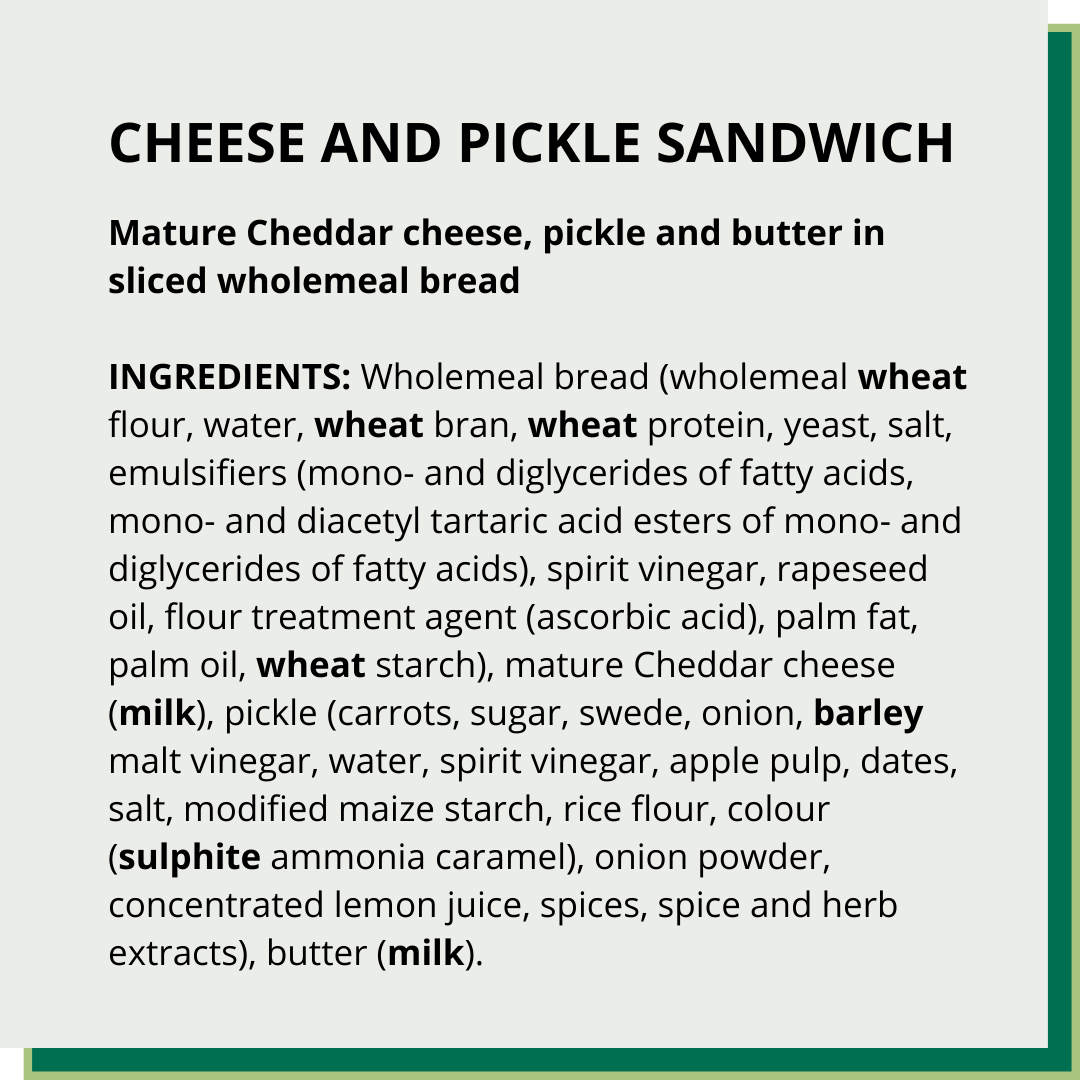Introduction to allergen labelling for PPDS food
What businesses need to know about the changes to allergen labelling for prepacked for direct sale (PPDS) food, also known as Natasha's Law.
This introduction is to help you check if your business needs to follow allergen labelling requirements, also known as Natasha's Law, and what you need to do to comply with the law.
Any business that produces prepacked for direct sale (PPDS) food is required to label it with the name of the food and a full ingredients list, with allergenic ingredients emphasised within the list.
This labelling helps protect your consumers by providing potentially life-saving allergen information on the packaging.
Businesses need to check if their products require PPDS labelling and what they need to do to comply with the law.
What is PPDS food?
Prepacked for direct sale or PPDS is food that is packaged at the same place it is offered or sold to consumers and is in this packaging before it is ordered or selected.
It can include food that consumers select themselves (e.g. from a display unit), as well as products kept behind a counter and some food sold at mobile or temporary outlets.
Food that isn't PPDS
- Any food that is not in packaging or is packaged after being ordered by the consumer. These are types of non-prepacked food and do not require a label with name, ingredients and allergens emphasised. Allergen information must still be provided but this can be done through other means, including orally.
- Food packed by one business and supplied to another business. This is prepacked food and already must have full labelling, including the name of the food and a full ingredients list, with allergenic ingredients emphasised within it.
Distance selling
The change to labelling requirements does not apply to PPDS food sold by means of distance selling, such as food that can be purchased over the phone or on the internet.
Businesses selling PPDS food this way will need to ensure that mandatory allergen information is available to the consumer before they purchase the product and also at the moment of delivery.
You must provide allergen information:
- before the purchase of the food is completed - this can be in writing (on a website, catalogue or menu) or orally (by phone)
- when the food is delivered - this can be in writing (allergen stickers on food or an enclosed copy of a menu) or orally (by phone)
Allergen information should be available to a customer in written form at a point between a customer placing the order and taking delivery of it.
Takeaway meals should be labelled clearly so customers know which dishes are suitable for those with an allergy.
Examples of PPDS food
Prepacked for direct sale (PPDS) food can include the following:
- Sandwiches and bakery products which are packed on site before a consumer selects or orders them
- Fast food packed before it is ordered, such as a burger under a hot lamp where the food cannot be altered without opening the packaging
- Products which are prepackaged on site ready for sale, such as pizzas, rotisserie chicken, salads and pasta pots
- Burgers and sausages prepackaged by a butcher on the premises ready for sale to consumers
- Samples of cookies given to consumers for free which were packed on site
- Foods packaged and then sold elsewhere by the same operator at a market stall or mobile site
- PPDS food provided in schools, care homes or hospitals and other similar settings will also require labelling

What needs to be on the label?
The label needs to show the name of the food and the ingredients list with the 14 allergens required to be declared by law emphasised within it.
These need to be in line with the legal requirements that apply to naming the food and listing ingredients.
Food businesses must still ensure they comply with existing relevant food information and labelling requirements for the country they operate in.
Here's our information on the 14 allergens and how to refer to them, where you'll find the detailed rules regarding the content, form and presentation of the name, ingredients and allergen information.

How to meet the requirements
If your business sells or supplies PPDS food you must comply with the law.
Use our allergen and ingredients food labelling decision tool to check if you produce PPDS food.
We've updated our allergen guidance for food businesses to include the changes in the requirements. More information is available in food allergen labelling and information requirements – Technical Guidance.
We also have information on allergen labelling for food manufacturers.
The allergen labelling requirements are outlined in the EU Food Information for Consumers Regulations.
Natasha's Law - why the changes to allergen information were introduced
Before 1 October 2021, the allergen information for these products could be provided by any means. This includes being informed verbally by staff.
Governments across the UK have decided that these foods will need to have ingredient and allergen information provided on the label from 1 October 2021.
England, Northern Ireland and Wales
Revision log
Published: 18 February 2021
Last updated: 4 September 2023